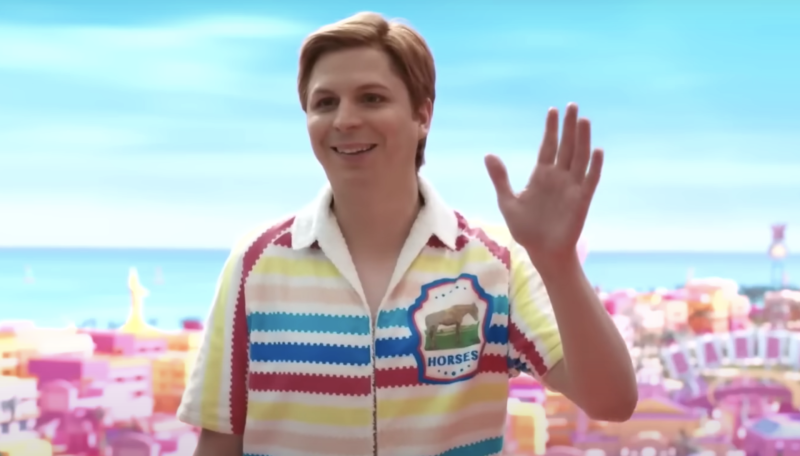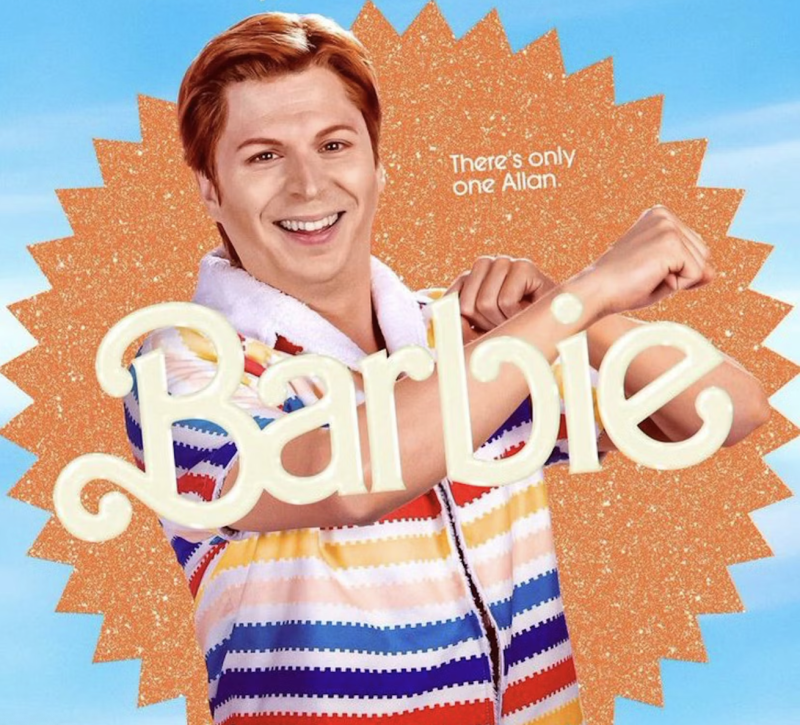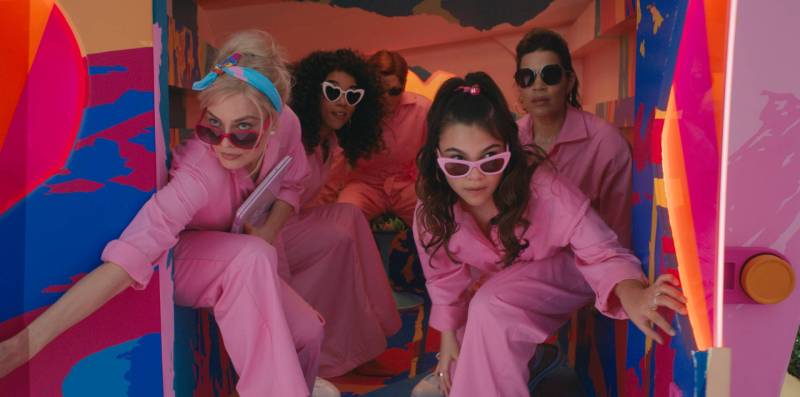One day, Robbie’s “stereotypical Barbie” starts having dark thoughts that disrupt her perfect existence. She is forced to go on a quest to the real world to try and fix whatever is wrong so she can return to oblivious joy. Along the way, there are lessons about female solidarity, the insidiousness of the patriarchy and the complicated cultural deprogramming women must do in order to thrive.
Allan is around throughout, but he doesn’t entirely fit in with either the Barbies or the Kens. That element is established early. As we see Barbie’s day unfold on screen for the very first time, all of the Barbies and all of the Kens are at the beach, taking the time to enthusiastically greet each other one-by-one. This goes on for some time. Then he appears, resplendent in his multicolored striped shirt and blue shorts, somewhat off to one side.
“Hi Barbie!” Allan calls.
“Oh, hi Allan!” Barbie smiles back.
And then a Helen Mirren voiceover pipes up to let the audience know: “There are no multiples of Allan. He’s just Allan.”
“Yeah,” Allan says, shifting awkwardly. “I’m confused about that.”
Introducing Allan this way initially implies that his primary function in Barbie will be to serve up comic relief on the side, a little slice of understated in a relentlessly bright, shiny world. (Make no mistake, Barbie is very funny at times. Gags about The Godfather, Stephen Malkmus and Matchbox Twenty’s “Push” are worth the ticket price alone.) What becomes clear as the movie progresses, however, is that Allan isn’t just a consistent scene-stealer — he’s the movie’s moral center. And a lot of that is due to the fact that there’s only one Allan.





 ‘Barbie’ hits theaters nationwide on Friday, July 21, 2023.
‘Barbie’ hits theaters nationwide on Friday, July 21, 2023.
